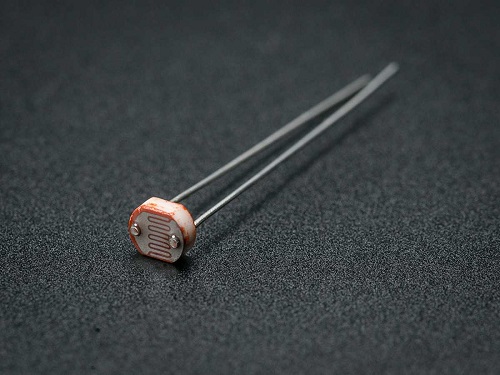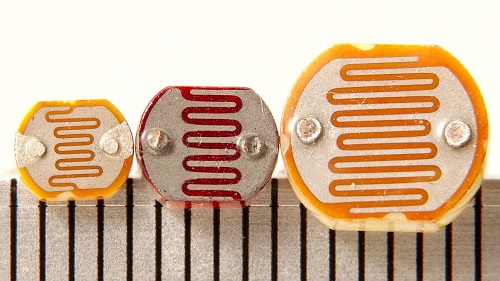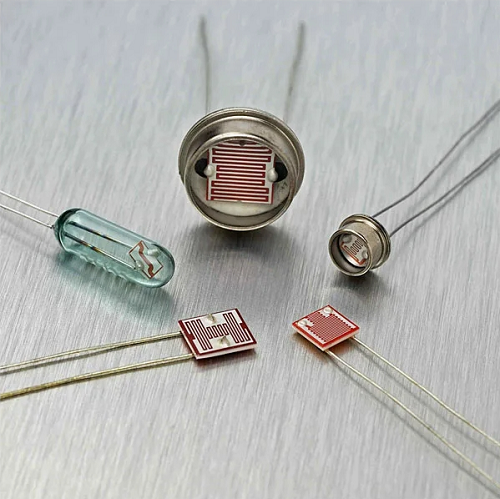HomeBlogA Comprehensive Guide to Photoresistors: Definitions, Types, Operating Mechanisms, and Applications
A Comprehensive Guide to Photoresistors: Definitions, Types, Operating Mechanisms, and Applications
In exploring the fascinating world of modern electronic technology, the research and application of photoresistors is undoubtedly a brilliant chapter. This unique electronic component plays an important role in many fields due to its high sensitivity to light. From automated lighting systems to complex scientific research, the use of photoresistors embodies the perfect fusion of electronic technology and optical principles. This article conducts an in-depth analysis of the nature and composition, working principle, structural characteristics, symbolic representation, types and wide range of application fields of photoresistors, aiming to provide a comprehensive and in-depth perspective for understanding the core principles of photoresistors. Technology and its application in modern technology.
The Nature and Composition of Photoresistor
Analysis of the Working Principle of Photoresistor
Structural Characteristics of Photoresistor
Symbol Representation of Photoresistor
Type of Photoresistor
Application Fields of Photoresistor
Conclusion
The nature and composition of photoresistor

photoresistor
Photoresistors, sometimes called light-dependent resistors (LDRs), thrive on the principle of the photoelectric effect. This unique electronic component is basically made of high-resistance semiconductor materials. Typically they are composed of substances such as cadmium selenide (CdSe), cadmium sulfide (CdS) or even silicon (Si) or germanium (Ge). The selection of these materials is not random; their band structure is key to their efficient generation of carriers under light. It's all about precision of choice.
Essentially, the defining characteristic of a photoresistor is its acute sensitivity to light. They are highly sensitive to light, so as the intensity of light increases, the resistance value decreases (a few ohms are lost). Therefore, the photoresistor becomes a low-resistance material when there is bright light, and becomes a high-resistance material when there is no light.
The most interesting part: this change in resistance is directly related to light intensity. Photoresistors do more than act as light detectors; they are also precise measures of light intensity. In addition, tuning the chemical composition and structure of these semiconductors can adapt them to specific light wavelengths to meet different application needs.
Analysis of the working principle of photoresistor

A Comprehensive Guide to Photoresistors Definitions, Types, Operating Mechanisms, and Applications
The workings of photoresistors reach into the realms of quantum mechanics and solid-state physics, which are both complex and profound. At its microscopic core, we witness a journey of transformational energy states. This process affects the material's electrical conductivity.
When light encounters a photoresist material, such as cadmium selenide or cadmium sulfide. Photons, those tiny packets of light energy, combine with valence electrons. Each photon carries energy, and the amount of energy is closely related to the wavelength of light. The shorter the wavelength, the higher the energy. If the photon has enough energy (up to a specific wavelength or lower), it attracts electrons in the valence band. These electrons jump when excited. They rise into the conduction band, out of the atomic range. Free electrons are produced.
When a valence electron leaves an atom, it leaves a gap, which we call a "hole." In the field of solid-state physics, these holes are analogous to positive charges.
Finally, free electrons carry electric current when they move freely. These holes also carry an electric current and move in the valence band. The process is gradual because as the light on the photocell's conductors increases, more charge carriers conduct electricity.
Generally speaking, the amount of current flowing through a photocell depends on the number of holes and free electrons available. That is, the greater the light energy, the greater the number of free electrons and holes (charge carriers). Subsequently, the current flowing through the LDR increases.
Structural characteristics of photoresistor
The structural properties of a photoresistor play a key role in defining its functionality. When conceptualizing photoresistors, two key aspects come into play: the optoelectronic properties of the material and the pursuit of optimized light absorption while generating efficient electron-hole pairs. The core of the photoresistor is the active semiconductor region, located on a semi-insulating substrate. This component is intricately embedded in the energy band structure and is a fundamental determinant of the photoresistor's sensitivity to light of specific wavelengths.
To finely calibrate the photoelectric response, a meticulous technique called doping is used in the production process. This process introduces trace elements into the semiconductor, allowing the electron concentration and energy band structure to be precisely tuned. Therefore, this enhances the photoelectric performance of the photoresistor.
In terms of physical design, photoresistors typically have a large surface area. This vast surface facilitates optimal light capture. Delicate patterns of photovoltaic cells are etched onto their surfaces, expanding the effective exposure area. A larger exposure area means increased photon absorption, resulting in enhanced responsivity and sensitivity.
In the design of a photoresistor, strategically positioned metal contacts surround the active area. These contacts serve a dual purpose: not only acting as an electrical bridge, but also helping to minimize resistance in the illuminated area, with their slender design mitigating contact resistance and ensuring seamless flow of current.
Symbol representation of photoresistor

International symbols (left) American symbols (right)
In the field of electronic circuit diagrams, the symbolic representation of photoresistors is a key element. It helps engineers and technicians navigate and interpret circuit designs. However, there are subtle differences in representation between international standards, such as International Electrotechnical Commission (IEC) standards, and U.S. standards, such as American National Standards Institute (ANSI) standards.
In international standards, for better understanding and memory, a photoresistor is depicted as a basic resistor symbol, decorated with a diagonal arrow through its center. This arrow is more than just a line, it symbolizes the influx of light. This is an acknowledgment of external light approaching the resistor. The aim is clarity and versatility, which are the hallmarks of these international symbols.
The American standard uses a slightly different notation. Here, the photoresistor still borrows the basic resistor symbol. What makes it unique, however, is its arrow—straight and pointing sideways. This also illustrates the effect of light on resistor characteristics. Often on these US diagrams you will find "LDR" (Light Dependent Resistor) engraved nearby, which is a textual reminder clarifying its function.
Delving deeper into the past, old circuit diagrams present a different picture. Photoresistors are sometimes described as resistors with zigzag lines. This representation is less common nowadays, it is a whisper of the past and still exists in some older electronics literature and tutorials.
The representation of photoresistors in contemporary circuit diagrams has evolved towards a more unified form. The familiar rectangle is the universal symbol for a common resistor, plus an arrow, to represent lighting. This modern expression is both intuitive and easy to understand and has become a standard for international communication.
Type of photoresistor

Photoresistor Type
Photoresistors have interesting functions and are mainly classified according to the type of semiconductor material they use. The choice of materials determines their photoresponsiveness and efficiency. Generally speaking, they are divided into two different categories: intrinsic photoresistors and epitaxial photoresistors. Each type is defined by its unique material properties, carving out its own niche in application areas and performance characteristics.
Intrinsic photoresistor:
In the world of intrinsic photoresistors, purity is key. Composed of pure semiconductor materials such as germanium (Ge) and silicon (Si), these devices are a simple study. Their pure state maintains a fixed number of valence electrons. But it’s their operation that sets them apart: they operate without doping. In the dark, the large energy gap between the valence and conduction bands gives these materials high resistance, blocking the surge of free charge carriers like electrons and holes. Light them up and the scene changes. The photon energy pushes the valence electrons into the conduction band, releasing electrons and holes. However, intrinsic photoresistors also have their limitations. Due to the limited pool of electrons in pure semiconductors, the number of carriers generated under light is still limited. This limitation means less photoresponsiveness. However, their high stability and specific wavelength response make them ideal for certain precision applications.
Epitaxial photoresistor:
In contrast, epitaxial photoresistors are more complex. They venture beyond purity and add doped semiconductor materials. Here, trace elements such as phosphorus or boron are introduced into the semiconductor, dramatically changing its electronic properties. There are two types of doping: N-type, rich in extra free electrons, or P-type, rich in extra holes. This process increases the number of available free charge carriers, enhancing conductivity even without external energy input. In the presence of light, these doped materials not only rely on intrinsic carrier generation mechanisms but also gain from doping atoms, thereby contributing additional free electrons or holes. This synergistic effect significantly increases the total carriers under illumination, resulting in a significant reduction in resistance, especially under lower illumination conditions. Epitaxial photoresistors shine with their exceptional photoresponsivity and sensitivity. They are preferred for applications requiring high responsiveness and low-light detection capabilities, such as security systems and nighttime lighting control.
Application fields of photoresistor

street lights at night
Known for their light sensitivity and simple design, photoresistors have found their place in numerous applications. Let’s dig into the technical complexities of some specific uses.
In the field of automatic control lighting systems, photoresistors are indispensable. Consider automated street lighting: As dusk falls and ambient light dims, the resistance of a photoresistor surges. This shift triggers a control circuit, prompting the street lights to illuminate the night.
In the field of automatic control lighting systems, photoresistors are indispensable. Consider automated street lighting: As dusk falls and ambient light dims, the resistance of a photoresistor surges. This shift triggers a control circuit, prompting the street lights to illuminate the night.
Solar street lights and solar road studs also rely on photoresistors. They measure the intensity of sunlight and fine-tune charge and discharge cycles for optimal energy use. In photography, these components are crucial in the camera's metering system. They calibrate exposure settings (such as aperture and shutter speed) to ensure that every photo is perfectly lit regardless of lighting conditions.
Photoresistors also play a role in film and video production. They adjust the brightness of various lighting fixtures, which is essential to achieve the desired visual effect.
In home automation systems, photoresistors are found in automatic curtains and night lights to adjust the operation of the device based on the surrounding light. In the commercial sector, they control billboard lighting, outdoor clocks and clock radios, adjusting brightness and display modes according to changes in ambient light.
Security systems also use photoresistors in smoke and burglar alarms to detect unusual changes in light. In smoke alarms, they sense changes in light scattering or blocking caused by smoke. They are used by access control systems and motion detectors to sense changes in light due to human movement.
The field of infrared astronomy is not left out either. Here, photoresistors, especially those sensitive to far-infrared wavelengths, act as detectors, observing the infrared radiation of celestial bodies.
In industrial settings, photoresistors monitor flames, identifying emissions of specific wavelengths. As sensors, they assist in path planning, obstacle avoidance, and environmental detection. Automated factories rely on them to control assembly line lighting, dynamically adjusting lighting conditions to improve work efficiency.
Conclusion
Photoresistors are an electronic device that benefits lighting technology because they are compact, widely available from electronic component distributors, and cost-effective. They may be less accurate, but are still good enough to serve electrical equipment. Each iteration of photoresistor has unique advantages and can be carefully customized for different application scenarios. In summary, photoresistors are not only an indispensable component in electronic engineering, but also a key tool in uncovering and harnessing the complexity of light energy, ensuring its lasting significance in the technological trajectory.
The above is the entire content of this article, I hope it will be helpful to your project. If you have any questions or comments, you can contact us at any time.